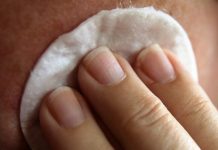It’s a brand-new day, and you’ve woken up with a painful rash on your face. Initially, it might seem small enough to cover up with a bandage and call it a day for the time being. After all, no one wants to put up with the common barriers that occur at a clinic. Whether it makes you pay high costs, deal with no health insurance, or simply takes up too much time, the clinic just doesn’t seem worth going to most of the time, especially for a skin infection that should clear away.
But that face rash of yours might be something a bit more sinister than a minor infection. In fact, it could very well be the product of a staph infection. And if it is, you should rethink your no-clinic thoughts as soon as possible. A recurring staph infection is no joke. If left untreated, it can cause blood poisoning and other life-threatening conditions like toxic shock syndrome.
You can avoid all of these consequences, though, by learning a little more about staph infections. That’s where this article comes in! Here, you’ll learn what a recurring staph infection is and the best way to go about stopping it.
What is a recurring staph infection?
First off, a staph infection is caused by Staphylococcus aureus bacteria, which is a very common germ found on the surface of the skin or in the nose. The germ will generally leave you be, as it’s not often it will infect your skin. But if there’s a chance it can invade deeper into your body through your bloodstream, joints, bones, lungs, or even heart, it will, and it’ll become deadlier as a result.
How does infection happen?
Okay, so, we know that a staph infection is not likely to happen most of the time. But then, how can you end up with one?
There are a few ways staph infections spread. The most likely way is when you unintentionally introduce the Staphylococcus aureus bacteria from one part of your body to another. For instance, you can transfer the bacteria by scratching a wound with dirty fingernails or doing something similar. Other ways of transferring the bacteria can include sharing personal items like bed linens with someone who has a staph infection and being in a warm, humid environment.
Is it possible to tell if you have one?
While not easy, you can actually determine if you have a staph infection. You just need to look out for the following signs and symptoms, which will depend on the type of infection you have:
- Skin infections — These might look like pimples or boils at first. Their surrounding area will likely look swollen and red. And if there is any pus or drainage coming from this surface, you’ll also likely see impetigo, which is a crusty, rash-like area that will cover your infection.
- Bone infections — If a recurring staph infection has penetrated your bones in a certain area, you may notice that the area itself will look a little swollen and red and feel a bit painful. In addition to this, you may also end up with chills and a fever.
- Endocarditis — An infection of the heart, this symptom can make you feel like you have the flu. So you experience flu-like symptoms, such as fever, chills, and fatigue.
- Food poisoning — Catching a staph infection from food poisoning is much less deadly. It will subject you to some unpleasant symptoms, however, including nausea, vomiting, and diarrhea.
- Toxic shock syndrome — With TSS, you may have a sunburn-like rash on your body somewhere. And you’ll likely experience a high fever, sudden low blood pressure, vomiting, diarrhea, and confusion. If you’re not careful about treating this situation, you could end up with organ failure.
But most importantly, if these signs and symptoms even remotely remind you of your facial rash in any way, get to the clinic. Make sure a doctor has a proper look at your rash and gives you a professional diagnosis. If you do have a recurring staph infection, you’re going to want medical assistance right away.
Can you treat it?
Luckily, if you do get to a doctor, they can help stop your staph infection! They will likely recommend prescription medication RIFADIN®. This antibiotic has been shown to effectively eradicate the germs that cause staph infections. So once you take it, you should notice a significant improvement in your face.
Unfortunately, before you can do that, you are going to need to deal with the high prescription pricing around here. Don’t fret about it just yet, though! If you choose to ship generic RIFADIN®- through a referral site like Online Canadian meds affordable & licensed pharmacy outside the United States, you’ll actually be dealing with a much cheaper prescription price.
Then, all you have to do is stay on your medication and keep your rash clean! You’ll soon see your staph infection fade from sight altogether.











